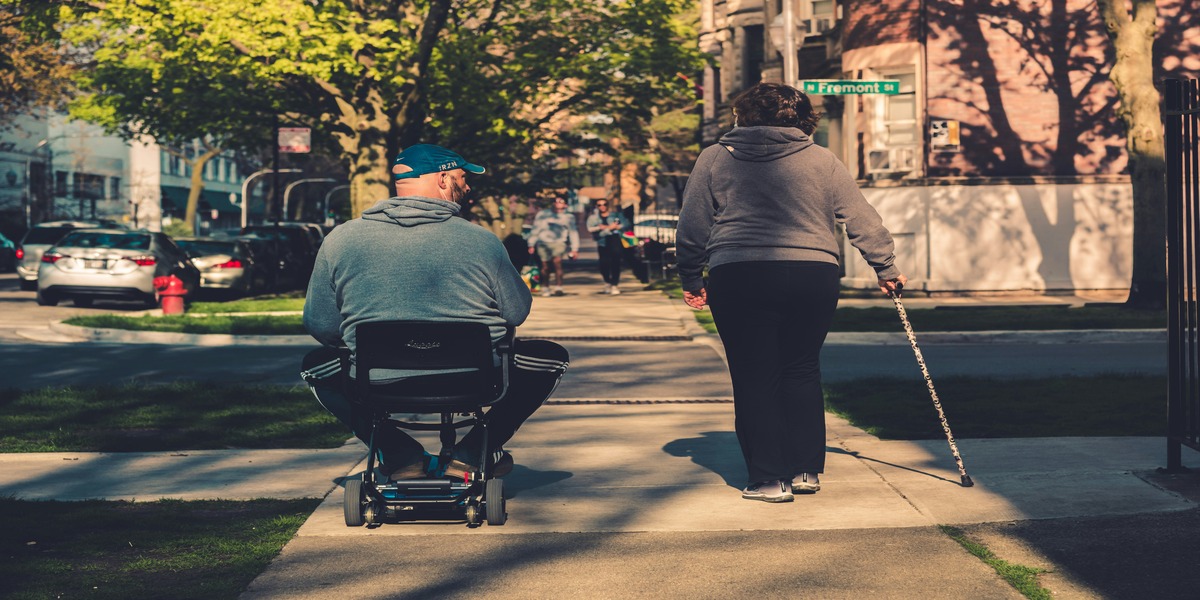Introduction to Walking Canes:
Walking canes are more than just a tool for support; they represent freedom, mobility, and independence. Whether you’re recovering from an injury or simply seeking additional stability in your daily routine, the right walking cane can make a world of difference. With various styles and designs available, choosing one that fits your needs is important. This guide will walk you through everything you need to know about walking canes—from their benefits to how to use them effectively—so that you can confidently navigate your surroundings with style and ease. Let’s dive into the essential aspects of walking with a cane!

The Benefits of Using a Walking Cane
A walking cane offers remarkable support for individuals needing assistance. It provides stability, helping to prevent falls and improve balance. This added security can be a game-changer in daily activities.
Using a walking cane also enhances mobility. Whether navigating crowded spaces or uneven terrain, it allows users to move confidently. Many find that they can walk longer distances with less fatigue.
Moreover, a walking cane encourages independence. For those who may rely on others for assistance, having their own cane fosters self-reliance and boosts confidence in performing everyday tasks.
Beyond functionality, many styles allow for personal expression. Canes come in various designs and materials, enabling users to choose one that complements their personality while serving its purpose effectively.
Incorporating a walking cane into your routine can lead to better posture and reduced strain on joints—an essential factor for long-term health and comfort as we age or recover from injuries.
Choosing the Right Walking Cane for Your Needs
Selecting the ideal walking cane involves considering various factors tailored to your lifestyle and mobility requirements.
First, assess your height. A proper walking cane should reach your wrist when standing straight. This ensures comfort and provides optimal support as you walk.
Next, consider the grip. Canes come with different handles such as T-shaped, ergonomic, or paddle grips. Choose one that feels comfortable in your hand while providing a secure hold.
Weight is another crucial aspect. If you need to carry it for extended periods, a lightweight option can reduce fatigue.
Think about style and functionality. Some canes offer additional features like folding capabilities or built-in lights for nighttime use. Pick one that not only meets functional needs but also matches your personal aesthetic—making it an extension of yourself rather than just a mobility aid.
How to Properly Use a Walking Cane
Using a walking cane correctly is essential for safety and support. Start by holding the cane on the side opposite your weak leg. This positioning helps distribute weight evenly.
When walking, move the cane forward first. Step with your weaker leg simultaneously while placing weight on the cane. This technique provides stability and confidence with each step.
Adjust the height of your walking cane so that it aligns with your wrist when you stand straight. A properly sized cane reduces strain and enhances balance.
As you navigate uneven surfaces or obstacles, maintain a firm grip on the handle. Keep your elbow slightly bent to absorb shocks from movement.
Remember to take slow, deliberate steps. Rushing can lead to missteps or falls, which can defeat purpose of using a walking aid like this one.
Tips for Maintaining and Storing Your Walking Cane
Maintaining your walking cane is essential for safety and longevity. Regularly inspect the cane for any signs of wear, such as cracks or bends. A sturdy handle ensures a secure grip, so check it often.
Cleaning is straightforward; use a damp cloth to wipe down the shaft and handle. For canes with rubber tips, replace them when they start to wear thin. This small step can prevent slips and falls.
When you’re not using your cane, store it in an upright position or hang it in a designated spot. Avoid leaving it in damp areas that could cause rust if it’s metal.
Also consider keeping your cane away from high-traffic areas to avoid tripping hazards for yourself or others. Taking these simple steps will ensure that you get the most out of your walking cane while staying safe and mobile.
Alternatives to Traditional Walking Canes
For those seeking mobility assistance beyond traditional walking canes, there are several innovative options available.
Rollators provide a sturdy frame with wheels, allowing for smooth movement. Many include a seat for rest breaks and storage for personal items. These devices offer stability and support while encouraging independence.
Another alternative is the forearm crutch. This design transfers weight to the forearms, providing additional balance and comfort. It’s an excellent choice for individuals needing more upper body support.
Walking sticks made from lightweight materials are also gaining popularity. They come in various styles and designs, appealing to those looking for both functionality and aesthetics.
Additionally, smart canes equipped with technology features like GPS navigation or obstacle detection enhance safety during walks.
These alternatives cater to diverse needs while promoting confidence on the move.

Conclusion: Embracing the Mobility and Independence of Walking with a Cane
Walking with a cane can transform daily life. It opens doors to new adventures and experiences.
Using a walking cane signifies strength and adaptability. It is an essential tool, not just for stability but also for regaining confidence.
Many individuals discover that their mobility improves as they become accustomed to using their cane. The sense of independence it brings allows them to engage more fully in activities they love.
Each step taken with a cane is a reminder that support comes in various forms. Embracing this assistance encourages freedom while navigating the world.
By choosing the right walking cane and learning how to use it properly, anyone can enhance their journey through life. The path ahead becomes clearer, filled with possibilities waiting to be explored.
FAQs
Walking canes are more than just mobility aids; they provide support and confidence to those who need it. Understanding the ins and outs of using a walking cane can truly enhance your experience, ensuring you maintain balance while preserving your independence.
As technology and design evolve, there are many options available now that cater to different needs. Keeping up with maintenance will extend the life of your cane, making sure it stays in great condition for years to come.
If you’re curious about specific aspects or have lingering questions regarding walking canes, check out these frequently asked questions:
What type of walking cane is best for seniors?
There isn’t a one-size-fits-all answer since individual needs vary. A lightweight cane with an ergonomic handle may be ideal for many seniors as it provides comfort without sacrificing stability.
How do I determine the right height for my walking cane?
To find the correct height, stand straight with your arms relaxed at your sides. The top of the cane should align with your wrist when standing comfortably.
Can I use a walking cane on stairs?
Yes! When navigating stairs, hold onto the railing if available and position the cane on the opposite side for added support. Always take care when ascending or descending.
Are there any health conditions that require special types of canes?
Certain conditions like arthritis may necessitate specialized designs such as offset handles or padded grips to facilitate easier use.
Is it safe to walk long distances with a walking cane?
Absolutely! Many users find walking canes help them navigate longer walks safely by providing additional support and reducing fatigue over time.
Exploring various styles and functionalities equips you better in choosing what fits best into your lifestyle. Embrace this tool not just as an aid but also as an enhancement toward experiencing greater mobility every day.


